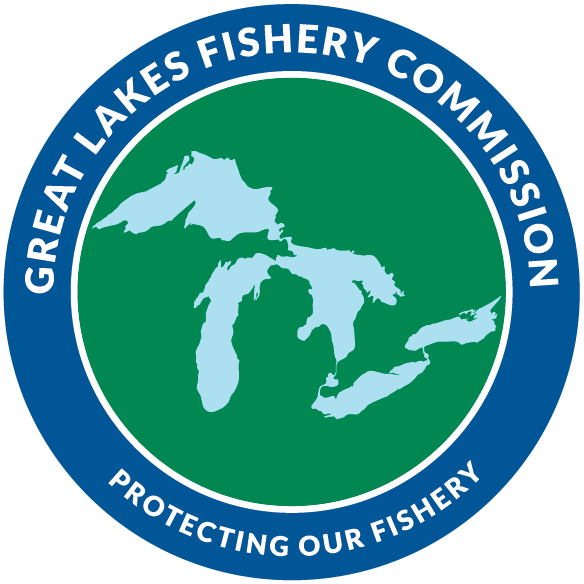Updated 2024-12-13 20:21:29
Lake Huron -> 4.0 Channel Catfish -> Channel Catfish Abundance
Reporting Interval
2018 - 2022
Area
US Waters
Meeting Target?
Meets
Indicator Trend
No trend
Confidence?
Moderate
4.1.2 Channel Catfish Survey Catch Rates
Nearshore US Waters - In the nearshore US waters of Lake Huron, catch per unit effort for Channel Catfish was variable with very low catch numbers over the current (2018-2022) and previous (2013-2017) reporting period. The spike in catch per unit effort in 2019 was due to a few sampling events with abnormally high catch numbers. Channel Catfish and other Ictalurids remain important predators in the nearshore systems of Lake Huron.
St. Marys River (Joint Waters) - In the St. Marys River, Channel Catfish catch per unit effort has been variable and relatively low over the current (2018-2022) and previous (2013-2017) reporting periods, similar to those numbers from nearshore Lake Huron waters of Michigan. The spike in catch in 2016 was due to a few sampling events that turned up abnormally high numbers of Channel Catfish. Channel Catfish and other Ictalurids continue to be an important predator in the pristine waters of the St. Marys River.
Saginaw Bay - In Saginaw Bay, catch per unit effort for Channel Catfish and Brown Bullhead has been variable over the current reporting period (2018-2022), with relatively greater catch numbers than the other nearshore US waters of Lake Huron. Channel Catfish, Brown Bullhead, and other Ictalurids remain important predators in the Saginaw Bay waters of Lake Huron.
Figure 1. Channel catfish catch per unit effort in US Nearshore waters and St. Marys River assessment surveys. Gears vary by assessment survey.
Figure 2. Channel catfish catch per unit effort in Saginaw Bay assessment surveys. Gears vary by assessment survey.
Methodology
Nearshore US Waters - Data comes from the USFWS AIS Early Detection and Monitoring database (2013-2022). Surveys occur in US waters of the Saint Marys River, eastern Upper Peninsula of Michigan, Cheboygan, Rogers City, Thunder Bay, Au Sable River, Au Gres, and Saginaw Bay. Gear includes electrofishing, bottom trawl, gill net, fyke net (mini and paired), and minnow trap. Sampling is conducted from spring to fall in river mouths and nearshore waters targeting species-rich areas and areas where rare species were previously captured. The survey was initiated in the St. Marys River in 2013, Saginaw River was added in 2017, and all remaining locations were added in 2019. Species are identified and counted during the survey, information is also collected about the location, water chemistry, and general habitat. Database ownership – US Fish and Wildlife Service Alpena Fish and Wildlife Conservation Office (for questions, contact Mike Rucinski, michael_rucinski@fws.gov).
St. Marys River (Joint Waters) - Data comes from the GLFC LHTC Saint Marys River Fisheries Task Group (SMRFTG) Nearshore Netting Survey which occurs roughly every 5 years by partners that sit on the SMRFTG. These surveys occurred in 2002, 2006, 2009, 2013, 2017, and 2022. Great Lakes Fishery Commission Lake Huron Technical Committee Saint Marys River Fisheries Task Group. Database ownership – Great Lakes Fishery Commission Lake Huron Technical Committee Saint Marys River Fisheries Task Group (for questions, contact Lisa O’Connor, lisa.oconnor@dfo-mpo.gc.ca).
Saginaw Bay - Data comes from the Michigan DNR Saginaw Bay gillnetting and trawling surveys. Database ownership – Michigan Department of Natural Resources (for questions, contact Dave Fielder, fielderd@michigan.gov).
Other Resources
Contributing Author(s)
- Mike Rucinski - USFWS
- Lisa O'Connor - DFO
- Dave Fielder - MDNR
- Jeff Jolley - MDNR

